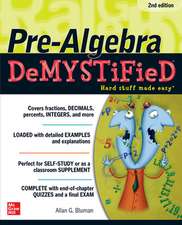Probability Based High Temperature Engineering: Creep and Structural Fire Resistance
Autor Leo Razdolskyen Limba Engleză Hardback – 28 aug 2016
| Toate formatele și edițiile | Preț | Express |
|---|---|---|
| Paperback (1) | 754.49 lei 39-44 zile | |
| Springer International Publishing – 14 iun 2018 | 754.49 lei 39-44 zile | |
| Hardback (1) | 1082.46 lei 39-44 zile | |
| Springer International Publishing – 28 aug 2016 | 1082.46 lei 39-44 zile |
Preț: 1082.46 lei
Preț vechi: 1405.79 lei
-23% Nou
Puncte Express: 1624
Preț estimativ în valută:
207.14€ • 221.49$ • 172.70£
207.14€ • 221.49$ • 172.70£
Carte tipărită la comandă
Livrare economică 14-19 aprilie
Preluare comenzi: 021 569.72.76
Specificații
ISBN-13: 9783319419077
ISBN-10: 3319419072
Pagini: 596
Ilustrații: XVII, 656 p. 308 illus., 257 illus. in color.
Dimensiuni: 155 x 235 x 40 mm
Greutate: 1.4 kg
Ediția:1st ed. 2017
Editura: Springer International Publishing
Colecția Springer
Locul publicării:Cham, Switzerland
ISBN-10: 3319419072
Pagini: 596
Ilustrații: XVII, 656 p. 308 illus., 257 illus. in color.
Dimensiuni: 155 x 235 x 40 mm
Greutate: 1.4 kg
Ediția:1st ed. 2017
Editura: Springer International Publishing
Colecția Springer
Locul publicării:Cham, Switzerland
Cuprins
Introduction.- Integral Volterra Equations.- Phenomenological Time Invariant Creep Models.- Phenomenological Time Variant Nonlinear Creep Models.- Transient Engineering Creep of Materials Under Various Fire Conditions.- Anisotropic Materials and Composite Structures.- Probabilistic Modeling of Creep and Stress-Strain Diagram.- Probability-based Engineering Creep and Design Fire Exposure.- Fire Severity and Structural Creep Analysis/Design.
Notă biografică
Leo Razdolsky, Ph.D., P.E., S.E., has nearly 50 years' experience as a practitioner and consultant in structural engineering, specializing in design of tall structures, site inspection, and project management. He has also taught structural engineering courses for more than 15 years at the University of Illinois at Chicago and Northwestern University, and conducted research on structural fire load and high-rise building design to mitigate extreme conditions during fires.
Textul de pe ultima copertă
This volume on structural fire resistance is for aerospace, structural, and fire prevention engineers; architects, and educators. It bridges the gap between prescriptive- and performance-based methods and simplifies very complex and comprehensive computer analyses to the point that the structural fire resistance and high temperature creep deformations will have a simple, approximate analytical expression that can be used in structural analysis and design. The book emphasizes methods of the theory of engineering creep (stress-strain diagrams) and mathematical operations quite distinct from those of solid mechanics absent high-temperature creep deformations, in particular the classical theory of elasticity and structural engineering. Dr. Razdolsky’s previous books focused on methods of computing the ultimate structural design load to the different fire scenarios. The current work is devoted to the computing of the estimated ultimate resistance of the structure taking into account the effect of high temperature creep deformations. An essential resource for aerospace structural engineers who wish to improve their understanding of structure exposed to flare up temperatures and severe fires, the book also serves as a textbook for introductory courses in fire safety in civil or structural engineering programs, vital reading for the PhD students in aerospace fire protection and structural engineering, and a case study of a number of high-profile fires (the World Trade Center, Broadgate Phase 8, One Meridian Plaza; Mandarin Towers). Probability Based High Temperature Engineering: Creep and Structural Fire Resistance successfully bridges the information gap between aerospace, structural, and engineers; building inspectors, architects, and code officials.
Caracteristici
Guides readers on how to evaluate high-temperature creep in the context of impact structural fire resistance of a given element and a system as a whole
Explains how to estimate the strain rate and provide ultimate design stress values for structural engineering design for a given fire scenario
Offers a mechanism of bridging the gaps between aerospace engineering, structural engineering, and fire protection engineering when fire is considered a design load
Describes methods of calculating probability based structural fire resistance and includes many worked examples, unavailable elsewhere
Computes the reliability index
Includes supplementary material: sn.pub/extras
Explains how to estimate the strain rate and provide ultimate design stress values for structural engineering design for a given fire scenario
Offers a mechanism of bridging the gaps between aerospace engineering, structural engineering, and fire protection engineering when fire is considered a design load
Describes methods of calculating probability based structural fire resistance and includes many worked examples, unavailable elsewhere
Computes the reliability index
Includes supplementary material: sn.pub/extras











